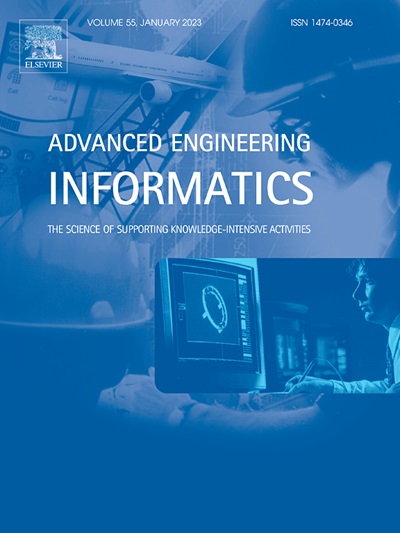DeepMonte-Frame: an intelligent workflow for planar steel frame design based on Monte Carlo Tree Search and Feedforward Neural Networks
IF 8
1区 工程技术
Q1 COMPUTER SCIENCE, ARTIFICIAL INTELLIGENCE
引用次数: 0
Abstract
Optimization of steel frame structures is typically formulated as a large-scale combinatorial problem. Previous research predominantly employs metaheuristic algorithms, which frequently face challenges such as high computational costs, sensitivity to hyperparameters, and reliance on initial solutions. To overcome these limitations, this study proposes a novel optimization workflow termed DeepMonte-Frame, integrating Monte Carlo Tree Search (MCTS) and Feedforward Neural Networks (FNNs). The FNNs rapidly predict structural responses, enhancing both the expansion and rollout phases of the MCTS, thereby significantly improving optimization performance in scenarios with sparse feasible solutions. Ablation experiments demonstrated the essential contribution of FNNs, while comparative evaluations against metaheuristic algorithms proved the superior performance of DeepMonte-Frame. Moreover, the method maintains robust performance when applied to irregular structural configurations, and exhibits remarkable flexibility in various optimization objectives, including cost and carbon footprint reduction. A comprehensive case study further validated the practical applicability of DeepMonte-Frame, achieving a 15.45 % cost reduction while ensuring compliance with engineering standards. The optimized designs can also be automatically transformed into BIM models, facilitating design decision-making and supporting subsequent interdisciplinary collaboration. Overall, DeepMonte-Frame is a highly effective and adaptable approach, significantly outperforming conventional methods and providing innovative insights for future research in structural optimization.
DeepMonte-Frame:一种基于Monte Carlo树搜索和前馈神经网络的平面钢架设计智能工作流程
钢框架结构的优化通常被表述为一个大规模的组合问题。以往的研究主要采用元启发式算法,但经常面临计算成本高、对超参数敏感、依赖初始解等挑战。为了克服这些限制,本研究提出了一种新的优化工作流程,称为DeepMonte-Frame,集成了蒙特卡罗树搜索(MCTS)和前馈神经网络(fnn)。fnn快速预测结构响应,增强了MCTS的扩展和推出阶段,从而显著提高了稀疏可行解场景下的优化性能。消融实验证明了fnn的重要贡献,而与元启发式算法的比较评估证明了DeepMonte-Frame的优越性能。此外,该方法在应用于不规则结构配置时仍保持稳健的性能,并在各种优化目标(包括降低成本和碳足迹)上表现出显著的灵活性。一个全面的案例研究进一步验证了DeepMonte-Frame的实际适用性,在确保符合工程标准的同时,实现了15.45%的成本降低。优化后的设计还可以自动转换为BIM模型,方便设计决策,支持后续的跨学科协作。总体而言,DeepMonte-Frame是一种高效且适应性强的方法,显著优于传统方法,为未来的结构优化研究提供了创新的见解。
本文章由计算机程序翻译,如有差异,请以英文原文为准。
求助全文
约1分钟内获得全文
求助全文
来源期刊

Advanced Engineering Informatics
工程技术-工程:综合
CiteScore
12.40
自引率
18.20%
发文量
292
审稿时长
45 days
期刊介绍:
Advanced Engineering Informatics is an international Journal that solicits research papers with an emphasis on 'knowledge' and 'engineering applications'. The Journal seeks original papers that report progress in applying methods of engineering informatics. These papers should have engineering relevance and help provide a scientific base for more reliable, spontaneous, and creative engineering decision-making. Additionally, papers should demonstrate the science of supporting knowledge-intensive engineering tasks and validate the generality, power, and scalability of new methods through rigorous evaluation, preferably both qualitatively and quantitatively. Abstracting and indexing for Advanced Engineering Informatics include Science Citation Index Expanded, Scopus and INSPEC.
 求助内容:
求助内容: 应助结果提醒方式:
应助结果提醒方式:


